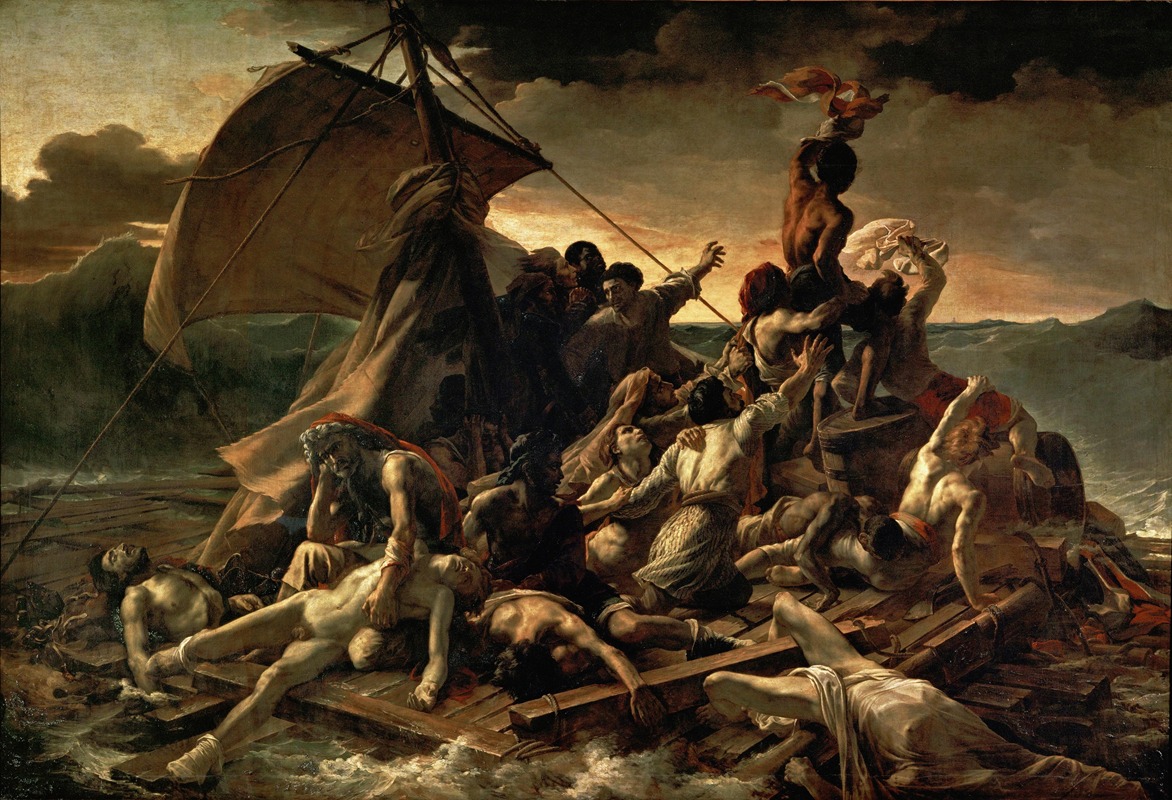
The Raft of the Medusa
A hand-painted replica of Théodore Géricault’s masterpiece The Raft of the Medusa, meticulously crafted by professional artists to capture the true essence of the original. Each piece is created with museum-quality canvas and rare mineral pigments, carefully painted by experienced artists with delicate brushstrokes and rich, layered colors to perfectly recreate the texture of the original artwork. Unlike machine-printed reproductions, this hand-painted version brings the painting to life, infused with the artist’s emotions and skill in every stroke. Whether for personal collection or home decoration, it instantly elevates the artistic atmosphere of any space.
The Raft of the Medusa is an iconic oil painting by the French Romantic artist Théodore Géricault, completed in 1819. This monumental work measures approximately 491 cm × 716 cm (193.3 in × 282.3 in) and is housed in the Louvre Museum in Paris. The painting is based on the tragic shipwreck of the French naval frigate Méduse, which ran aground off the coast of Senegal in 1816. The incident became a national scandal in France, largely due to the incompetence of the captain, who had been appointed due to political connections rather than merit.
The Méduse was part of a convoy tasked with reclaiming the French colony of Senegal from the British after the Napoleonic Wars. When the ship ran aground on a sandbank, the captain and senior officers abandoned the vessel, leaving 147 crew and passengers to fend for themselves on a hastily constructed raft. After 13 harrowing days at sea, only 15 survivors were rescued, having endured starvation, dehydration, and cannibalism.
Géricault was deeply moved by the event and chose it as the subject of his ambitious painting. He conducted extensive research to ensure the accuracy and emotional impact of his work. This included interviewing survivors, studying the human body through morgue visits, and constructing a detailed scale model of the raft. His dedication to realism and emotional depth is evident in the painting's dramatic composition and meticulous attention to detail.
The Raft of the Medusa depicts the moment when the survivors, having spotted a rescue ship on the horizon, muster their last reserves of strength to signal for help. The composition is a dynamic pyramid of figures, with the most hopeful at the apex, waving a cloth to attract attention. The painting's chiaroscuro and dramatic use of light and shadow heighten the emotional intensity, while the turbulent sea and ominous sky underscore the perilous situation.
Géricault's work is notable for its departure from the neoclassical style that dominated French art at the time. Instead, it embraces the Romantic movement's emphasis on emotion, individualism, and the sublime power of nature. The painting's raw depiction of human suffering and survival was both shocking and compelling to contemporary audiences.
Upon its unveiling at the 1819 Paris Salon, The Raft of the Medusa received mixed reviews. While some critics praised its technical mastery and emotional power, others were disturbed by its graphic realism and political implications. The painting was seen as a critique of the French government, highlighting the incompetence and corruption that led to the tragedy.
Despite the initial controversy, The Raft of the Medusa has since become one of the most celebrated works of the Romantic era. It has influenced countless artists and remains a powerful testament to human endurance and the capacity for hope in the face of despair. Géricault's masterpiece continues to captivate audiences with its dramatic portrayal of a historical event that resonates with universal themes of survival and the struggle against adversity.


















